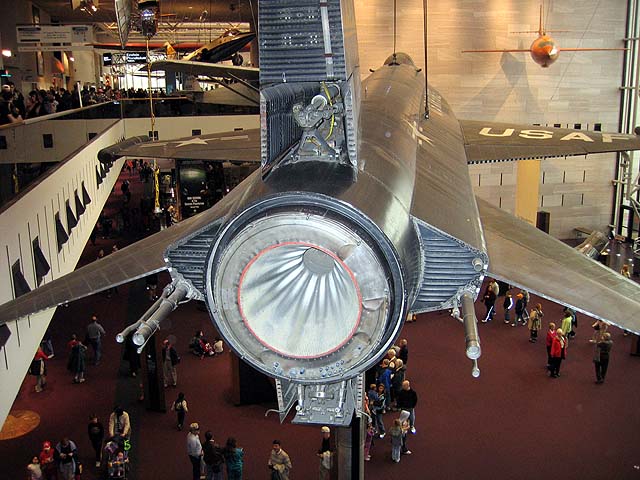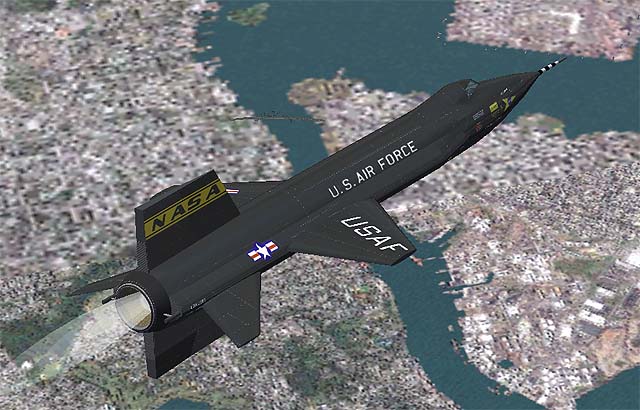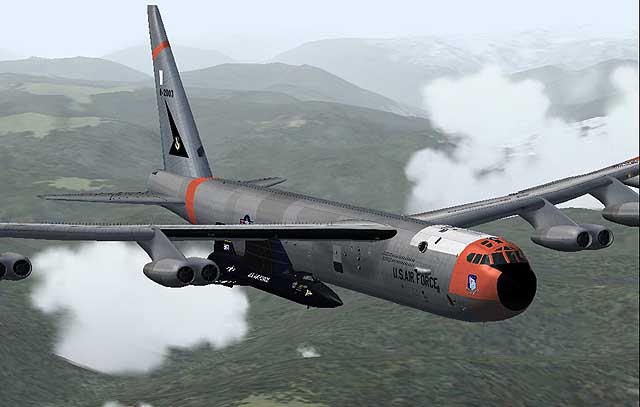The X-15 is perhaps the most ambitious aircraft ever created. It was built to push the limits of flight
and explore the possibilities of space travel.
During its research program the aircraft set unofficial world speed and altitude records of 4,520 mph
(Mach 6.7 on Oct. 3, 1967, with Air Force pilot Pete Knight at the controls) and 354,200 ft (on Aug. 22, 1963,
with NASA pilot Joseph Walker in the cockpit).
The WADC helped develop the aircraft in coordination with NACA, the Air Force, and the Navy. In the course
of its flight research, the X-15's pilots and instrumentation yielded data for more than 765 research reports.
The X-15 had no landing gear, but rather skidded to a stop in a 200 mph landing on skis. It had reaction
controls for attitude control in space, and was a major step on the path toward space exploration. Much of
what was learned on the X-15 was applied to the Space Shuttle.
The X-15 program, however, was concerned with much more than just dazzling, ultra-performance
records. It generated nearly 800 technical reports on research stimulated by the airplane's
development and flight tests, and it had a profound impact on America's manned space program.
It demonstrated, for example, that pilots could ably perform under the stresses of hypersonic
accelerations, as well as the weightlessness of space. In doing so, it clearly documented man's
ability to pilot a rocket-boosted vehicle out of the atmosphere and then perform a lifting
reentry upon its return. While offering palpable evidence that piloted reusable spacecraft
were a genuine near-term possibility, it was also used as a test bed for a variety of other
space-related experiments. The celestial navigation equipment ultimately destined for use
in the Apollo program, for example, was first tested on the X-15. Generally considered to
be the most productive effort of its kind in history, the X-15 program remains, to this day,
the high-water mark for flight research worldwide.
Specifications of the X-15
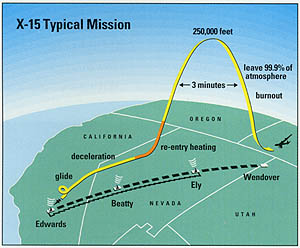
Span: 22 ft. 3 in.
Length: 50 ft. 3 in.
Gross weight = 31,275 lbs
Empty weight = 11,374 lbs
Engine: Reaction Motors XLR-99 rocket
engine, 57,000 lbs. thrust
PERFORMANCE
Maximum speed: Mach 6.72, 4,520 mph. (unoffical
record by X-15 No. 2)
Range: Over 250 miles (flight path
distance)
Service Ceiling: 354,200 ft. (unoffical
record by X-15 No. 3)
Total flight time in the program:
30 hr. 13 mm., 49.2 sec
Total time above Mach: (cumulative)
Mach 1: 18 hr. 23 mm. 11.6 sec
Mach 2: 12 hr. 13 mm. 50 sec
Mach 3: 8 hr. 51mm. 12.8 sec
Mach 4: 5 hr. 57 mm. 23.8 sec
Mach 5: 1 hr. 27 mm. 15.8 sec
Mach 6: 1 mm. 16.8 sec
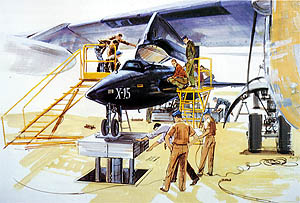 The Pilots
The Pilots
The 12 pilots of NASA, the Air Force, Navy,
and North American Aviation who flew in the
program are listed in the order of their first flights,
along with their total flight numbers.
A. Scott Crossfleld, NAA, 14 flights
Joseph A. Walker, NASA, 25 flights
Robert M. White, USAF, 16 flights
Forrest S. Petersen, USN, 5 flights
John B. McKay, NASA, 29 flights
Robert A. Rushworth, USAF, 34 flights
Neil A. Armstrong, NASA, 7 flights
Joe H. Engle, USAF, 16 flights
Milton 0. Thompson, NASA, 14 flights
William J. Knight, USAF, 16 flights
William H. Dana, NASA, 16 flights
Michael J. Adams, USAF, 7 flights
The Aircraft Now
The No. 1 X-15, with a serial number of 56-
6670, is publicly displayed in the National Air and
Space Museum, Washington, D.C., next to the
Wright Brothers Flyer and the Spirit of St. Louis,
flown by Charles Lindbergh.
The No. 2 X-15, with a serial number of 56-
6671, is publicly displayed at the Air Force Museum,
Dayton, Ohio. It is displayed in its original
configuration, without the external fuel tanks, though
it retains the fuselage extension. The aircraft was
delivered to the museum in October 1969.
The No.3 X- 15, which carried a serial number
of 56-6672, was destroyed in a crash on Nov. 17,
1967. The pilot, Air Force Maj. Michael J. Adams,
was killed when he lost control in space and was not able to recover.
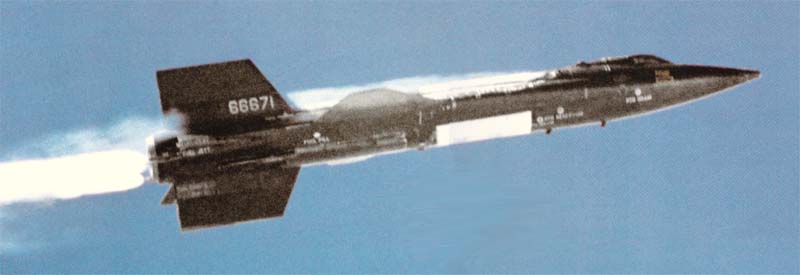
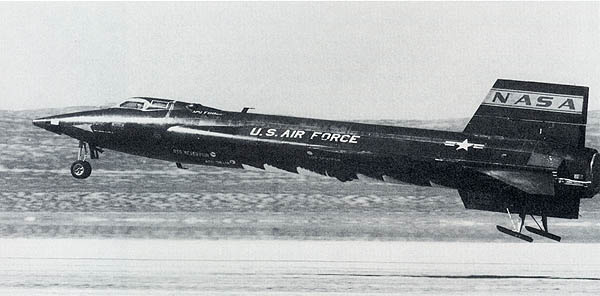



 The Pilots
The Pilots
